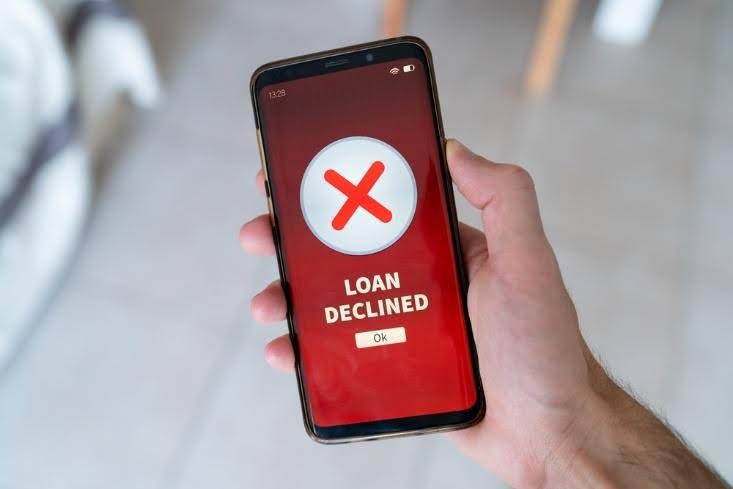Nonprofit Financial Hub

Overcoming a Slow Giving Tuesday: Nonprofit Lending Contingency Plans that Actually Work!
Giving Tuesday represents a critical fundraising opportunity for nonprofits, yet many organizations face unexpected shortfalls during this crucial period. Recent studies show that over 35% of nonprofits fall short of their Giving Tuesday goals, leaving them scrambling to maintain essential operations and programs. This challenge highlights the growing importance of nonprofit lending as a strategic financial tool for organizations facing temporary funding gaps.
Organizations can protect their missions and maintain momentum through careful preparation and smart financial planning. This article explores effective strategies for Giving Tuesday preparation, practical contingency plans for slower-than-expected fundraising periods, and how nonprofit lending options provide essential financial flexibility. Readers will discover how combining traditional fundraising approaches with modern financing solutions helps create a robust financial foundation for year-round operational stability.
Preparing for Giving Tuesday: Key Strategies
Successful Giving Tuesday campaigns require strategic planning that begins months before the actual day. Organizations should start drafting their strategy early to ensure comprehensive campaign coverage 1. A well-structured preparation approach includes several critical components that maximize fundraising potential.
Digital-First Strategy Implementation Digital platforms have become the cornerstone of Giving Tuesday success, with online giving driving significant donation volume 1. Organizations should optimize their donation pages to enhance the giving experience, as cumbersome processes can lead to donation abandonment 1.
Key preparation elements include:
- Segmenting donor lists for targeted outreach
- Crafting platform-specific social media messages
- Optimizing donation pages for mobile users
- Developing email marketing sequences
- Creating compelling impact stories
Engagement and Communication Focus Email marketing serves as a crucial component, with early communication being essential for building momentum 1. Organizations should send targeted messages early in the day and clearly state their Giving Tuesday participation 1. Studies show that retaining existing supporters is more cost-efficient than acquiring new ones 1.
For maximum impact, nonprofits should make their appeals specific rather than requesting unrestricted donations 1. This approach, combined with clear communication about fund usage, helps donors understand their impact and increases the likelihood of continued support. Organizations should also consider establishing lines of credit for nonprofits as a backup strategy, ensuring operational stability throughout the giving season.
Contingency Planning for Slow Fundraising
Effective contingency planning has become crucial for nonprofits, especially given that about 30% of organizations don’t survive beyond their first decade 2. Recent data shows a concerning 10% decrease in nonprofit donations between 2021 and 2023, highlighting the need for robust backup strategies.
Key Fundraising Challenges to Plan For:
- Event cancellations or venue issues or weather-related disruptions for outdoor events
- Technical difficulties with online donation platforms
- Declining donor engagement across the board and donor saturation overall
- Increased competition for dollars from other nonprofits in your cause area
- Unexpected regulatory compliance costs or audits
- Lost pledge or canceled donation
- Delayed grant
Organizations should establish a core emergency response team with specific roles to handle these types of crises, including dedicated technical support and donor stewardship specialists 3. This approach helps maintain operational continuity when challenges arise. Creating flexible contracts with vendors and maintaining open communication with sponsors about contingency plans can provide additional security 3.
For financial stability overall, nonprofits should consider establishing a line of credit or exploring nonprofit lending options. This strategy becomes particularly important given that donor numbers decreased by more than 10% in the last few years2. A robust financial backup plan, combined with clear donor communication strategies, helps organizations maintain momentum even during slower periods.
To strengthen contingency measures, organizations should implement payment controls and standardized reimbursement policies 4. Regular risk assessments and proactive planning help identify potential challenges before they impact fundraising efforts, ensuring organizations can maintain their critical programs and services regardless of temporary funding fluctuations.
Nonprofit Lending Options as a Safety Net
Financial institutions have evolved to offer specialized lending solutions for nonprofit organizations, recognizing their unique operational needs and funding cycles. Community development financial institutions (CDFIs) and nonprofit loan funds have emerged as primary lenders, offering loans up to $10,000,000with competitive terms 5.
Key Lending Options Available:
- Term loans for long-term projects and equipment
- Lines of credit for working capital
- Commercial mortgages for property acquisition
- Bridge loans for temporary funding gaps
While traditional banks may charge higher interest rates due to perceived risks 6, specialized nonprofit lenders like the B Generous often provide more favorable terms, and may even offer below market financing 5. Credit unions, being nonprofit entities themselves, also usually extend more competitive rates to charitable organizations 7.
For immediate operational needs, revolving lines of credit prove particularly valuable, allowing organizations to draw funds as needed and repay when donations and/or grants arrive 8. This flexibility becomes crucial during seasonal fluctuations, as nonprofits often experience significant donation peaks around year-end while maintaining consistent expenses throughout the year 6.
Modern lending platforms have streamlined the application process, with some offering same-day fund transfers and minimal documentation requirements 9. These solutions provide nonprofits with quick access to capital without the extensive waiting periods typically associated with traditional funding sources.
Maximizing Impact: Combining Fundraising and Lending
Modern nonprofits are discovering the strategic advantage of combining traditional fundraising methods with innovative lending solutions. Organizations that integrate these approaches report more stable operations and enhanced ability to pursue mission-critical initiatives 10.
Strategic Integration Benefits:
- Improved cash flow management during seasonal fluctuations
- Enhanced ability to respond to immediate community needs and emergencies
- Greater capacity for long-term program planning
- Reduced stress on fundraising teams
- Strengthened donor relationships through consistent program delivery
Conclusion
Successful nonprofit organizations recognize that Giving Tuesday success depends on both careful preparation and reliable backup plans. Strategic campaign planning, combined with established lending options, creates a robust financial foundation that protects critical operations during slower giving periods. Organizations that embrace this dual approach maintain program consistency while building stronger relationships with donors through demonstrated financial responsibility and operational stability.
Smart nonprofits understand the value of securing financial options before they become necessary, especially as giving season approaches. These organizations position themselves for success by establishing multiple funding streams that support their missions throughout the year.
Look into your financing options today by filling out our form at the bottom of the article to get in touch. This proactive approach ensures nonprofits can focus on their core mission while maintaining the financial flexibility needed to serve their communities effectively.
Access bridge financing now by connecting with our team
"*" indicates required fields
References
[1] – https://bloomerang.co/blog/givingtuesday/
[2] – https://www.netsuite.com/portal/resource/articles/accounting/nonprofit-fundraising-challenges.shtml
[3] – https://donorly.com/thedonorlyblog/contingency-planning-tips
[4] – https://www.jitasagroup.com/jitasa_nonprofit_blog/risk-management-for-nonprofits/
[5] – https://www.uschamber.com/co/run/finance/loan-types-for-nonprofit-businesses
[6] – https://www.mcdonaldjacobs.cpa/nonprofits-do-your-due-diligence-before-taking-out-a-loan/
[7] – https://www.kpmcpa.com/what-are-the-options-for-your-non-profit-to-get-the-financing-it-needs/
[8] – https://www.beneficialstatebank.com/nonprofit-banking/lending
[9] – https://financingsolutionsnow.com/nonprofit-line-of-credit-loan-for-nonprofits/
[10] – https://phoenixphilanthropy.com/resource/balancing-fundraising/
[11] – https://nonprofithub.org/why-nonprofits-should-integrate-marketing-fundraising/
[12] – https://www.communityforce.com/maximizing-financial-stability-a-guide-for-nonprofits/
[13] – https://www.nonprofitpro.com/financial-foundations-for-nonprofit-success-strategies-to-maximize-impact/


